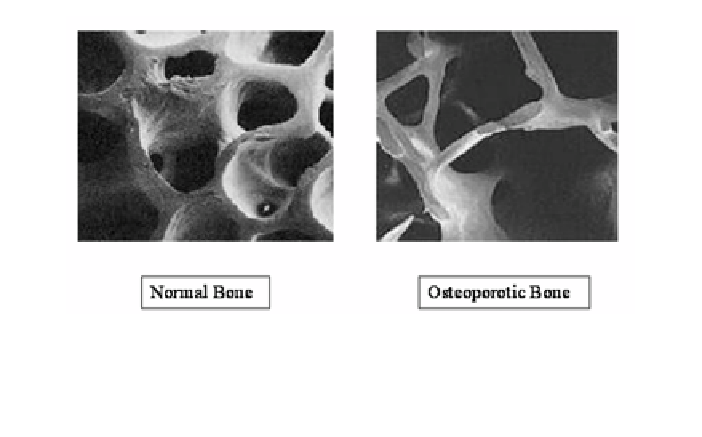Biomedical Engineering Reference
In-Depth Information
Figure 3
. Loss of complexity in bone. Note the loss of connectivity and fractal-like architec-
ture in bone with age-related osteoporosis.
consistently higher multiscale entropy values for dynamic processes with long-
range (1/
f
-type) correlations, compared to those with uncorrelated random noise.
Therefore, this measure appears useful for quantifying the complexity of a time
series and distinguishing it from irregularity due to uncorrelated noise.
3.
EXAMPLES OF COMPLEXITY LOSS WITH AGING
There are numerous examples of the progressive loss of complexity in the
fractal architecture of anatomic structures and the dynamics of physiologic proc-
esses with advancing age. As shown in Table 1, structures such as neurons, bone
trabeculae, kidney glomeruli, and elastic fibers or dermal papillae beneath the
skin all lose structural complexity with aging (5). The loss of connectivity in
bone trabeculae, characteristic of osteoporosis, is shown in Figure 3. Not only
anatomic structures, but physiologic processes also lose complexity with aging.
These include heart rate (13), blood pressure (13), and respiratory dynamics
(14), center of pressure trajectories when measured on a balance platform (Fig-
ure 4), and gait dynamics (15) (Table 2). Moreover, complexity loss has been
shown to be associated with a variety of diseases and adverse outcomes (Tables
3 and 4). On the basis of these observations, we have hypothesized that the age-
related loss of complexity in physiologic systems results in an impaired ability
to adapt to stress and the ultimate development of disease and disability (2).
In response to a given stress or perturbation, physiologic systems mount
a specific adaptive response that restores the organism to a new dynamic equi-
librium. Therefore, the dynamics observed during resting and stimulated condi-
tions are often quite different. For example, when glucose is ingested, insulin is

